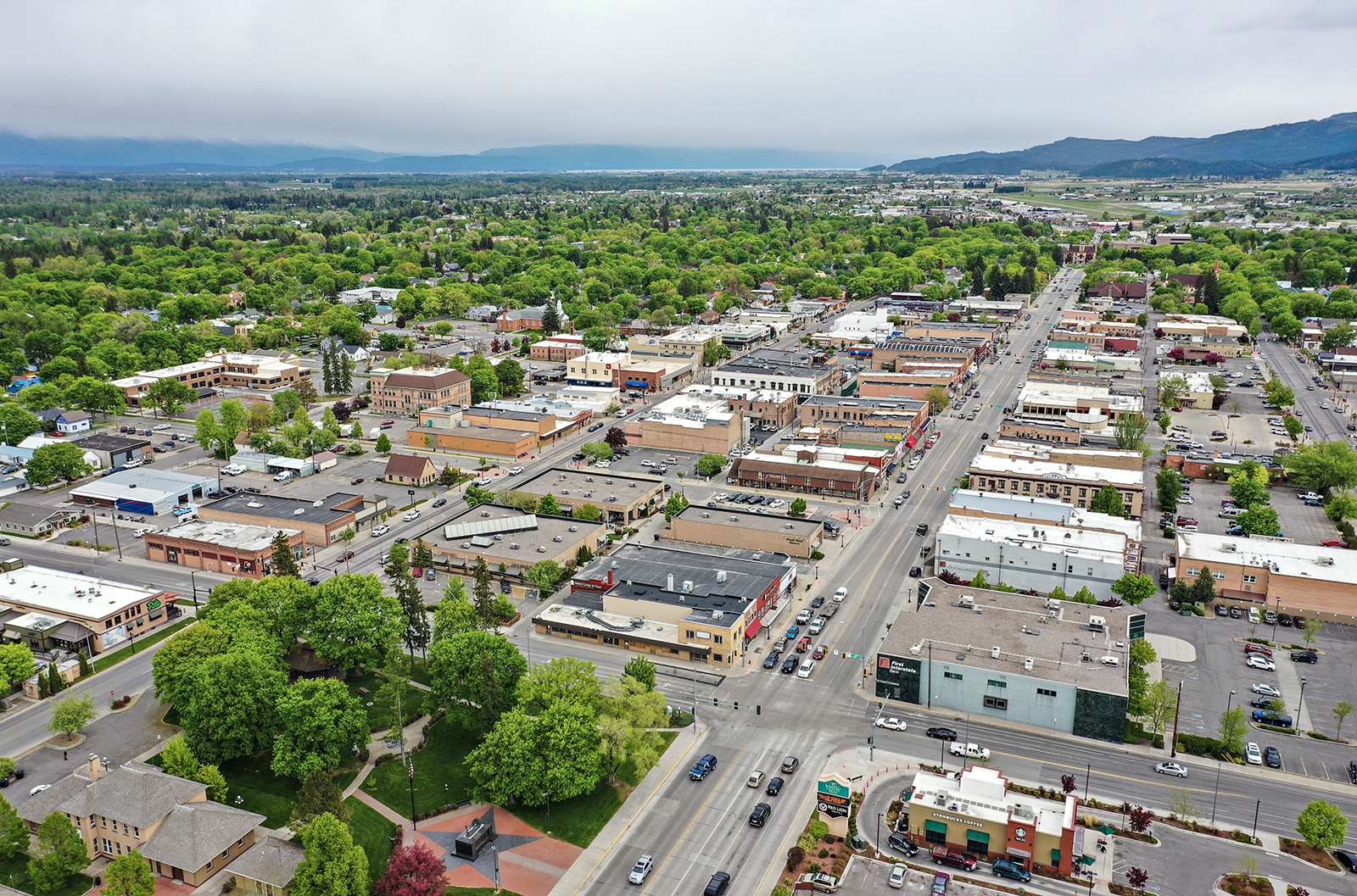Kalispell Begins Implementing New Land Use Plan
Under the Montana Land Use Planning Act established by the 2023 Legislature, the municipality is required to adopt a new plan designed to limit public review processes and remove zoning barriers to streamline housing projects
By Maggie Dresser
Kalispell city officials have begun implementing the Montana Land Use Planning Act after the 2023 Legislature required the municipality to adopt a new plan designed to limit zoning regulations and streamline administrative review processes.
At the March 18 Kalispell Chamber of Commerce luncheon, Development Services Assistant Director PJ Sorensen outlined the implications of Senate Bill 382, explaining to the audience at Flathead Valley Community College how the act will alter the city’s planning methods.
“It really changes how we approach long-range planning in the state,” Sorensen said.
As Kalispell’s population continues to grow at a steady 2.5% rate, the planning act aims to reduce regulations to bring more housing to the area while bypassing a public review process. For example, conditional use permits that previously required discretionary approval from the city will now be streamlined administratively, according to Sorensen.
Historically, the city has followed the guidelines of the Kalispell Growth Policy, which was last updated in 2017 and must now be replaced with a land use plan meeting the requirements laid out in SB 382.
The removal of the public-engagement criteria, however, is currently subject to review by the Montana Supreme Court after a district court judge in Bozeman struck that portion of the bill down. District Court Judge Mike Salvagni ruled last year that the law violates the Montana Constitution’s right of participation.
Sorensen said the change in public review is not intended to prevent public participation, but to encourage earlier input.
“A lot of the theory behind SB 382 isn’t to cut the public out – and sometimes it feels that way when you’re talking about not having those public hearings related to subdivisions – but what it’s really trying to do is take the focus of public comment from having an almost ad hoc as developments happen and shifting it up front,” Sorensen said.
Aside from the public review element of SB 382, the planning act lays out zoning requirements for cities of at least 7,000 residents to pick five housing strategies out of a list of 14. Of the 10 cities mandated to take part in the process, Columbia Falls and Whitefish also must adhere to the planning act.
For example, zoning regulations designed to reduce barriers include allowing two isolated housing units on one property; allowing accessory dwelling units in all zones; and allowing a four-plex on a single-family lot.
“Basically, you wouldn’t have true single-family housing anymore,” Sorensen said.
Other ways in which SB 382 eases regulatory requirements include increasing allowable building heights by at least 25%, reducing setbacks by 25% and reducing minimum lot sizes by 25%.
Kalispell city officials have already begun implementing parts of the Montana Land Use Planning Act, which must be fully adopted by May 2026. Last year, the Kalispell Planning Board’s title shifted to the Kalispell Planning Commission, although responsibilities of the members remain the same.
This year, several work sessions and pop-up events around the city were established to educate the public about the new participation process and to encourage residents to engage in projects earlier.
City officials have also launched an “Engage Kalispell” project website, which includes a questionnaire about resident’s vision for the future and outlines the land use plan, which is planned to head to the city council for approval by the end of the summer.
“We’re really ramping this up,” Sorensen said. “As we enter the next calendar year, we will hopefully have everything in place.”